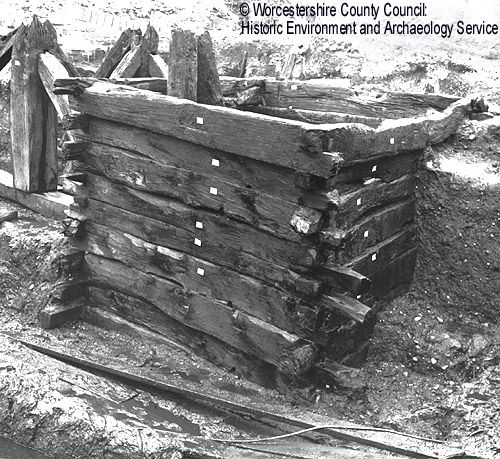Mediaeval Salt Industry
Documents show wide-ranging monastic interests in the parish, mainly relating to salt rights, held by Westwood Nunnery, Bordesley Abbey, and Worcester Priory, among others.
Historical evidence hints that Wychbold had some particular advantages over other manors in the region. Its salt rights were valuable, though in the medieval period the Crown had been careful to attach the brine springs to the new borough of Droitwich rather than to Wychbold. This is evident in the boundary of the medieval borough which incorporates the area of the Upwich brine springs.

The Upwich brine pit
Built in AD 1264-5 – this photograph taken during the archaeological excavation shows it exposed to about a third of its overall depth. It was constructed of beams overlapped in the corners. The later pump mechanism and pipes are visible (left).
Read more about the local Salt Industry in our Industry section